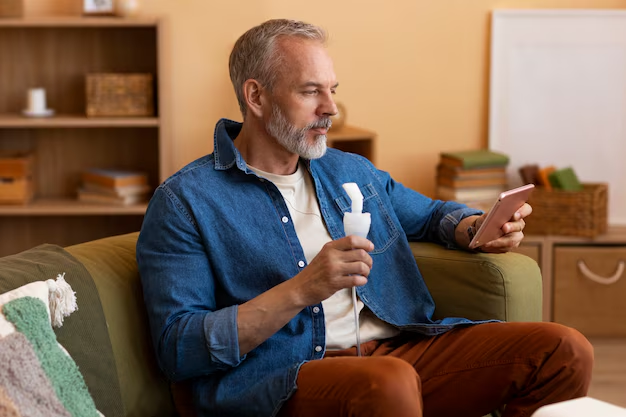Understanding the Stages of COPD: What You Need to Know
Chronic Obstructive Pulmonary Disease, more commonly known as COPD, is a progressive lung disease that affects millions of individuals worldwide, gradually impairing their ability to breathe. COPD is a major cause of disability, and understanding its stages is crucial for managing the disease and optimizing quality of life. Whether you're newly diagnosed, know someone who has COPD, or are seeking to deepen your understanding, this article provides a comprehensive guide to the stages of COPD, offering insights into symptoms, progression, and management strategies.
🌬️ What is COPD?
COPD is characterized by persistent respiratory symptoms and airflow limitation. It comprises two main conditions: chronic bronchitis, which involves inflammation and mucus production in the airways, and emphysema, which involves destruction of the air sacs in the lungs. While smoking is a major risk factor, other environmental and genetic factors can also contribute to the development of COPD.
📜 The Stages of COPD
COPD progresses through various stages, typically categorized by spirometry tests which measure lung function. The stages range from mild to very severe, with symptoms and limitations increasing as the disease advances.
Stage 1: Mild COPD
In this initial stage, individuals may experience a chronic cough and increased mucus production. Most might not realize they have COPD at this point, as symptoms are minimal.
- Symptoms: Chronic cough, slight breathlessness during physical activity.
- Management Focus: Smoking cessation and avoiding lung irritants are crucial. Regular exercise and a balanced diet can help maintain lung function.
Stage 2: Moderate COPD
This is often the stage where individuals seek medical attention, as symptoms become more apparent and start to interfere with daily activities.
- Symptoms: Increased shortness of breath, wheezing, chest tightness, more noticeable cough.
- Management Focus: In addition to lifestyle changes, medications such as bronchodilators may be prescribed to ease breathing.
Stage 3: Severe COPD
Symptoms significantly worsen, and individuals may find it challenging to carry out simple activities. This stage greatly impacts quality of life.
- Symptoms: Severe breathlessness, fatigue, frequent exacerbations or flare-ups.
- Management Focus: Advanced medications may be required, along with pulmonary rehabilitation to enhance respiratory capacity and endurance.
Stage 4: Very Severe COPD
Also known as end-stage COPD, this stage involves life-threatening flare-ups and severely impaired lung function. The person's mobility and independence are often severely restricted.
- Symptoms: Extreme breathlessness, frequent respiratory infections, potential heart complications.
- Management Focus: Comprehensive care including oxygen therapy and possibly surgical interventions like lung volume reduction surgery or transplantation.
🛠️ How COPD is Diagnosed
Diagnosis is typically achieved through a combination of medical history review, physical examinations, and spirometry tests. Spirometry is a key diagnostic tool that measures the amount of air a person can exhale and how quickly it is done. The results of these tests are vital for determining the stage of COPD.
🚦 What Triggers COPD?
Recognizing and managing triggers can prevent COPD flare-ups. Common triggers include:
- Smoking: The most significant risk factor for COPD exacerbations.
- Air Pollution: Both indoor and outdoor pollutants can worsen symptoms.
- Infections: Respiratory infections often lead to exacerbations.
- Seasonal Changes: Extreme temperatures and seasonal allergies can impact lung function.
🛡️ Managing COPD Effectively
Lifestyle Adjustments
Adopting a healthy lifestyle can make a significant difference in managing COPD:
- Quit Smoking: Ceasing smoking is the most effective way to slow the progression of COPD.
- Regular Exercise: Incorporating cardiovascular and muscle-strengthening activities aids in improving overall stamina.
- Healthy Diet: A diet rich in fruits, vegetables, and lean proteins supports lung health.
Medical Treatments
Treatment often involves a combination of therapies tailored to the individual's needs and stage of COPD:
- Medications: Inhalers (bronchodilators and steroids) are commonly prescribed to manage symptoms and prevent flare-ups.
- Oxygen Therapy: For advanced stages, supplemental oxygen may be necessary.
- Pulmonary Rehabilitation: A comprehensive program that includes exercise, education, and nutritional advice to improve quality of life.
Monitoring and Regular Checkups
Regular medical checkups and lung function tests are essential for monitoring the progression of COPD and adjusting treatment plans accordingly.
📝 A Quick Recap: COPD Stages at a Glance
Here's a summary of the COPD stages and their management:
| Stage | Symptoms | Management Focus |
|---|---|---|
| Mild (Stage 1) | Chronic cough | Smoking cessation, lifestyle modifications |
| Moderate (Stage 2) | Shortness of breath | Inhalers, regular checkups |
| Severe (Stage 3) | Increased breathlessness | Advanced medications, pulmonary rehab |
| Very Severe (Stage 4) | Extreme symptoms | Comprehensive care, possible surgical options |
📚 Related Topics to Explore
Understanding COPD doesn't stop at its stages. Here are some subtopics that add depth to the discussion:
Genetic Factors in COPD
While smoking is the leading cause, genetic factors such as alpha-1 antitrypsin deficiency can make individuals more susceptible to COPD. Exploring these genetic links can provide insight into personalized treatment approaches.
COPD and Mental Health
Living with COPD can take a toll on mental health, leading to anxiety and depression. Addressing these issues through counseling and support groups can be beneficial.
Innovative Research and Treatments
New research and technological advancements continue to emerge, offering hope for better management and possible future treatments. Staying informed about these developments can empower those affected by COPD.
Respiratory Therapy and COPD
Learn about the role of respiratory therapists in managing COPD and improving lung function through specialized techniques and therapeutic interventions.
👏 Final Thoughts on Living with COPD
Living with COPD requires a multifaceted approach, involving lifestyle changes, medical treatments, and supportive care. Though it is a chronic condition, understanding its stages and the associated management strategies can empower individuals to maintain a better quality of life. With the right tools and knowledge, those affected can navigate the challenges posed by COPD more effectively, focusing on wellness and enhanced daily functioning.
